
Rediscovering Japan

Rediscovering Japan
Seasonal Events (January)

by tomizuta
New Year's Day
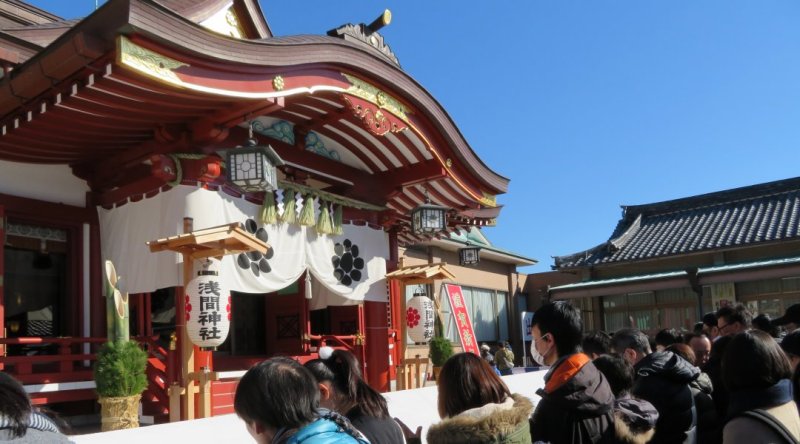 The start of
the New Year is such an important period for us Japanese, especially the first
three days in January which are national holidays.
The start of
the New Year is such an important period for us Japanese, especially the first
three days in January which are national holidays.
A must is to visit a Shinto shrine or Buddhist temple to deliver an offering
and pray for a good year. If you were to bump into anyone that you know,
you should exchange congratulations for the arrival of the New Year, and
ask that the other person will continue to extend the friendship or support
to you in the New Year, to which the other party would respond, likewise.
The New Years'
Day holiday period is also an important period for those that have left the
countryside to work in the major cities. 10s of millions of people travel back
to their hometowns to meet up with their elderly parents, grandparents and
relatives during this period.
(Left: People praying at Sengen Shinto Shrine in Inage, Chiba.)
Osechi
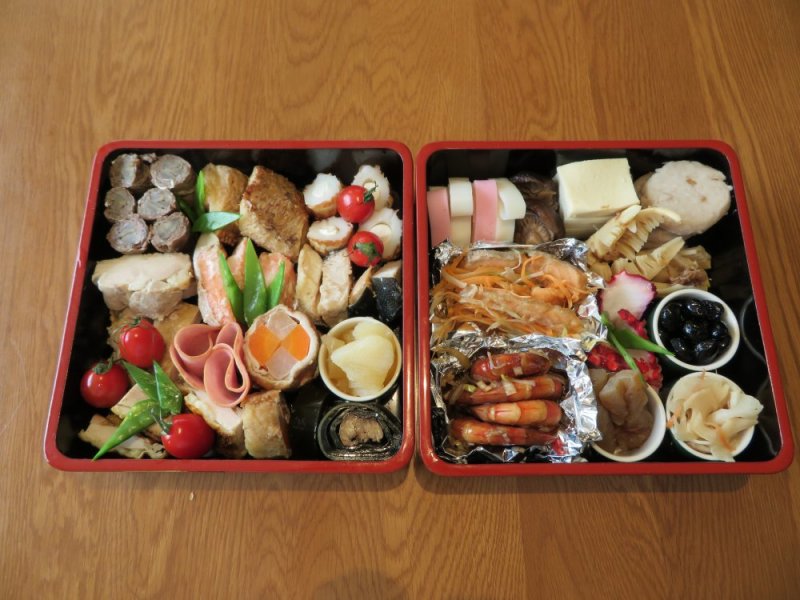 Osechiryouri is traditional Japanese New Year foods.
Osechiryouri is traditional Japanese New Year foods.
Japan imported from China, the custom of celebrating the change of
the season five times a year. These were called Sekku, meaning junctures in
January, March, May, July and September, and osechiruouri meant the food served
on such occasions.
As New Year’s Day is the most important of the five, osechiryouri
eventually came to mean food served in the New Year.
The food is composed of dishes that are thought to bring good
fortune to the family in that year. It is very much based on a play of words or
puns.
We will have cooked black beans. Beans in Japanese is mame, which
also can mean good health. So we have it to wish for good health. There is also
herring roe, which would indicate many children and so on.
Osechiryouri is prepared in the previous year, so that the
housewives do not have to cook during the New Year holidays.
( Left: Our Osechiryouri in 2017.)
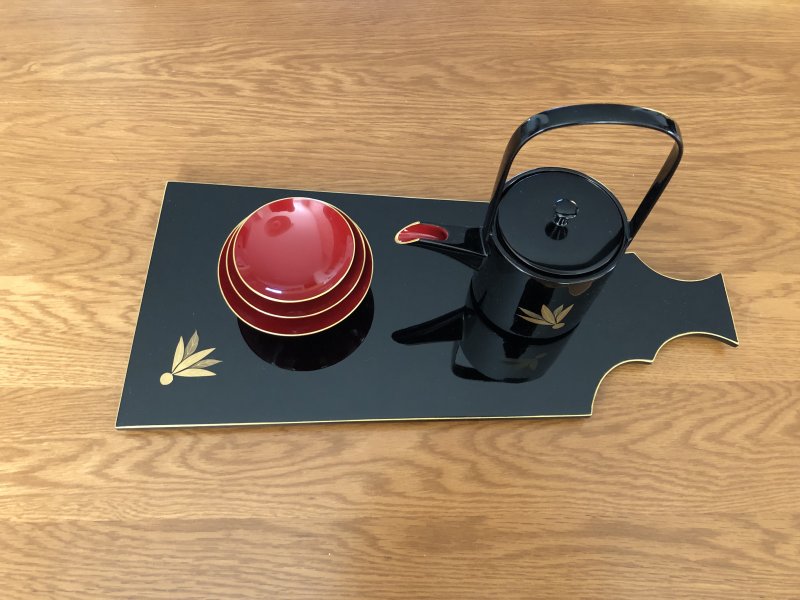 One tradition on the first three days of the New Year is a drink called
Otoso. I must admit that I never knew that there are local differences
in the tradition. I will describe what I belive to be most common.
One tradition on the first three days of the New Year is a drink called
Otoso. I must admit that I never knew that there are local differences
in the tradition. I will describe what I belive to be most common.
The purpose of the tradition is to pray for the health and wellbeing of
family members, conducted before starting the meal (osechi). The Otoso
is served from a special serving set (Tosoki) composed of a pot and three
drinking plates of three sizes, with the smallest plate on the top. The
family members all line up with the youngest in front facing east. The
ritual starts by the most elderly person serving Otoso to the youngest
person. The person drinking from the plate must chant "As I drink,
there will be no suffering in the family. As I drink, their will be no
illness within a four kilometer radius", and passes the plate to the
next youngest person. This is conducted three times using the three plates.
It is said that the tradition was imported from China in the reign of Emperor
Saga (809-823 A.D.) It appears in a poetic diary Tosa Nikki from the early
10th century.
Toso is prepared by steeping Tososan (dried herb powder composed of cinnamon,
Japanese pepper (sansho), citrus peel, Chinese bellflower (kikyo), clove
and glehnia (hamabofu) amongst others) in sake for a couple of hours and
adding mirin or sugar as a sweetmer.
(Left: Otoso set)
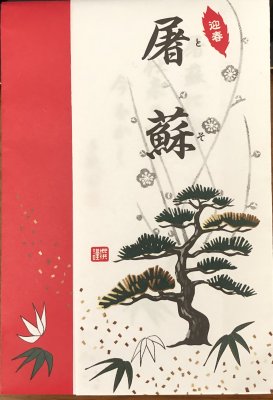
(Above: Tososan packet)
Hanabiramochi
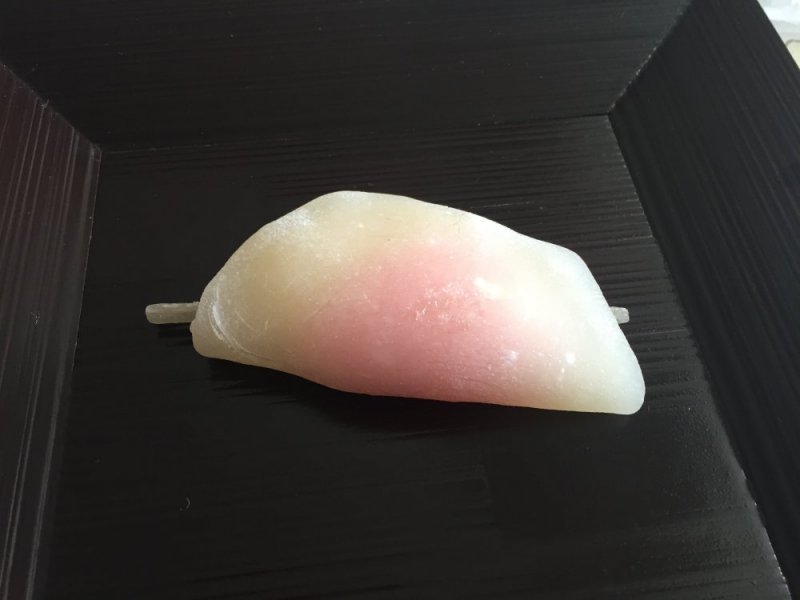 And we shouldn't forget the Japanese sweets to celebrate the new year,
Hanabiramochi (Flower Petal Sweets).
And we shouldn't forget the Japanese sweets to celebrate the new year,
Hanabiramochi (Flower Petal Sweets).
Contact:tomizuta@aol.com